One thing that has allowed the horror genre to thrive and evolve in the way it has is that it is universal. Every culture has its own ghost stories or folk tales designed to shock and frighten any who dare to listen. Some of the scariest stories come from Japanese culture, and this is evident in the imported horror movies from the country.
Updated July 18, 2023: It's difficult to narrow down the best horror movies from Japan, but if you're a fan of J-horror whatsoever, we've updated this list of essential titles for you to check out.
From the early yōkai films with supernatural spirits and the giant monsters of its kaiju movies, to the psychedelic freak-out movies of the '60s and '70s and the disturbing nightmares of its modern movies, Japan has always been a dominant force in the world of cinematic horror. Honestly, each decade of Japanese cinema has multiple masterpieces in the horror genre, from Kwaidan and House to Jigoku and The Suicide Club, but here we present a more succinct list of the most important. These movies are so influential that many of them were remade into American movies. From ghosts and demons to monstrous madmen, here are some of the best Japanese horror movies.
15 Brutal (2017)
Some horror stories are filled with unique original premises, or at least Japan does its best to offer some different from the usual tropes we are used to. Brutal is a film directed by Takashi Hirose, and as weird as it may seem, it’s a love story. The main cast features the acting talents of Katrina Grey and Miyavi Matsunoi.
The story begins with a killer roaming Japan, carefully picking each victim. This deranged man is looking for love in his own unique way, and it doesn’t take long until he finds someone with similar tendencies. The two killers go on a mad rampage to consummate their love.
14 Infection (2004)
Originally titled Kansen, Infection touches on our most recent fears as the story takes place in a run-down, understaffed hospital where a local man is denied attention for a black rash that is seemingly taking over his body. The film, written and directed by Masayuki Ochiai, features the talents of Kōichi Satō and Masanobu Takashima.
The mystery begins when the affected man is found to be secreting a green ooze out of his pores. Fearing it may be infectious, the hospital goes on total lockdown as every staff member begins to be taken over by the virus, with only a few survivors being able to call for help and having to secure their survival until receiving any assistance.
13 Lesson of Evil (2012)
If you ever wonder how some teachers feel about bullies, Lesson of Evil will surely, please you. In a world where school policies and red tape keep teachers from offering nothing more than a mere reprimand, Seiji Hasumi feels compelled to do more for his students.
Written and directed by Takashi Miike, Lesson of Evil is a terrifying film that features the talents of Hideaki Ito, Fumi Nikaido, and Takayuki Yamada. Hasumi is a teacher with everything, and he’s well aware of his privilege, but he’s not so sure about his students, so he punishes those who victimize the weak with his unique brand of justice.
12 Godzilla (1954)
The kaiju genre is one of the most popular subgenres of Japanese horror, and no monster is more iconic than Godzilla. Over 30 Godzilla films have been made, and the character who is best known for fighting other giant monsters has become a beloved figure in film history. It may not seem scary today, but the origins of Godzilla's first film were bred from pure terror: the horrors of nuclear warfare.
Godzilla was released in 1954, just nine years after the bombing of Hiroshima and Nagasaki. The terror felt during these attacks was still coursing through the people of Japan, and that is where Godzilla comes in. The character was born from nuclear energy, and he has one thing in mind: destruction. The original film doesn't feature monsters fighting each other, or Godzilla protecting Earth from an alien threat. In his first appearance, Godzilla was created to be the physical manifestation of nuclear destruction.
11 One Missed Call (2003)
The American remake of One Missed Call was critically panned when it was released. Because of the film's less-than-stellar reputation, many fans will opt out of seeing the original film from the great Takashi Miike. This is a huge mistake, as the original is a much better film.
Based on the novel Chakushin Ari by Yasushi Akimoto, One Missed Call sees people receiving mysterious voicemails from unknown numbers. The messages are dated several days in the future and contain audio of the recipient dying. When the date of the message arrives, the recipient dies in unnatural and brutal ways. When a young girl receives a message after losing her friends, she must solve the mystery before her time is up. One Missed Call is filled with J-horror tropes that will be familiar to fans of the genre, but it is still a creepy and effective film.
10 The Depths (1957)
The Depths (also known as Ghost Story of Kasane Swamp) is a chilling tale about revenge and sacrifice. The film relies heavily on atmosphere to convey its message (like Ugetsu and other early, dread-filled Japanese masterpieces), and it sticks with anyone who watches.
The Depths follows a young couple whose fathers killed one another many years ago. The two try to travel through the Kasane swamp, where their fathers' spirits rest. The movie is a cautionary tale about revenge and anger and remains one of the most popular J-horror films from this era. The movie was remade several times, but most agree the original is the best version of the story.
9 Audition (1999)
Equal parts taut thriller and disturbing horror, director Takashi Miike helmed the lauded 1999 film Audition, which follows the story of a recent widow, Shigeharu Aoyama, as he sets out to find a new bride under the guise of a mock casting audition. Aoyama believes he has found the perfect partner in the beautiful but reserved Asami, and the pair swiftly begin a courtship.
It doesn't take long until the widow and audiences realize Asami is not what she seems, and the film takes a brutal and hair-raising turn as her disturbing and unhinged tendencies are revealed. Audition includes difficult-to-stomach torture scenes and a gruesome final sequence that left both viewers and critics stunned. Audition has been praised for its inclusion of themes like feminism and misogyny, as her disgust and rage towards men fuels the vengeful Asami.
8 Horrors Of Malformed Men (1969)
Even a title as eye-catching as Horrors of Malformed Men can't prepare the viewer for what this film has to offer. When Hirosuke, a medical student who has been locked away in an asylum, escapes, he becomes the primary suspect in a murder. Hirosuke soon sees a photo of Genzaburo Komoda, a dead man who looks exactly like him. Hirosuke pretends to be a resurrected Komoda and takes over the dead man's life. When Hirosuke visits Komoda's father, a mad scientist who performs sick operations on people to make them "perfect," he soon comes to learn about his own familial connections to the scientist, which is where the real horrors begin.
On top of having an intriguing mystery, Horrors of Malformed Men has some truly disturbing imagery involving human test subjects. The film is fascinating, yet hard to watch at times. It is a movie that has truly earned the name of its genre, and though it may not be one of the most important horror movies of all time, it is still one that deserves to be seen by horror fans.
7 Cure (1997)
Having an engaging horror movie is one thing; adding in a mystery plot that grabs viewers and refuses to let go is something else entirely. More of a modern murder mystery, Cure follows a detective as he attempts to solve a string of grisly murders. Each victim has an X carved into their neck, and the culprit is always found nearby.
The problem is, none of the supposed murderers has any recollection of their crimes. The detective quickly realizes there is more to this case than meets the eye, and he is desperate to find out what. Cure is a thrill ride from beginning to end, and was the start of a string of horror masterpieces from director Kiyoshi Kurosawa. Few films can shock and intrigue audiences in such a way as this.
6 Pulse (2001)
Pulse (or Kairo), another masterpiece from Kiyoshi Kurosawa, is unique in that it features two storylines that run parallel with each other and eventually intertwine. The film follows two groups of people as they discover spirits are attempting to enter our world via the internet. In 2001, the internet was still relatively new and, to some, scary.
Pulse taps into that fear by suggesting there is something waiting on the World Wide Web. Something waiting for the right moment to strike and enter the human world. The film received the English remake Pulse in 2006. The remake, co-written by Wes Craven, was panned almost immediately. Even though it is far, far from Wes Craven's best movie, the American remake somehow received two sequels.
5 Noroi: The Curse (2005)
Found footage horror is hit or miss. Sometimes it is by the numbers and dull, while other times it is chilling and engaging. Noroi: The Curse is very much the latter. The film is composed of supposed footage of an unfinished documentary made by a paranormal researcher who went missing.
Noroi: The Curse may sound like one of the countless Blair Witch Project ripoffs, but it arguably takes what that film did and makes it better. The movie truly feels like it is found footage, and the uncanny realism makes the experience that much more terrifying. From beginning to end, the film's scary imagery and unsettling, creepy atmosphere will latch on to the viewer. Odds are this film will still be felt long after the viewing is over.
4 Onibaba (1964)
Onibaba is almost always mentioned when the topic of Japanese horror is brought up, and for good reason. The film is a period piece set in the fourteenth century, when two young women kill soldiers and steal their possessions. They soon realize the error of their ways when a samurai in a demonic-looking mask appears and enacts retribution.
Inspired by the Shin Buddhist parable of "yome-odoshi-no men (bride-scaring mask)," Onibaba is a drama as much as it is a horror, and the two genres mix seamlessly to create a fun and suspenseful time. The mask of the samurai is horrifying and sticks in the mind of the viewer for a long time. This samurai could have easily fit among the ranks of other horror legends had he returned for sequels.
3 Ju-on: The Grudge (2002)
One of the best-known J-horror films of all time, Takashi Shimizu's Ju-on: The Grudge is about a vengeful spirit that punishes anyone who enters the house in which it resides. The movie is terrifying and chilling in all the right ways, and even the most grizzled horror hounds find this film a spine-tingling experience. The iconic spirits are still terrifying audiences to this day, and the groaning sound they make continues to be imitated. It is no surprise this movie is considered one of the best international horror films of all time.
The film received an English remake called The Grudge in 2006, which spawned two sequels and a reboot. What many people may not know is Ju-on: The Grudge is actually the third in a series. The first two were Ju-on: The Curse and Ju-on: The Curse 2.
2 Uzumaki (2000)
In his outstanding directorial debut, Higuchinsky brought to life the terrifying manga Uzumaki, a story that centers on the small, cursed town of Kurouzu-cho, where the residents become obsessed with spirals. This fixation leads to people turning violent against themselves and others on their quest to create the mysterious curve.
Uzumaki is a gruesome and chilling horror flick that is based on the Junji Ito manga series and features the town's inhabitants taking their own lives in various creepy manners, such as crawling into a washing machine, using a power drill to the eye and stepping in front of a moving vehicle. Higuchinsky employs a spine-tingling atmosphere and unnerving build-up as the movie progresses, and viewers will definitely turn squeamish as they witness the residents spiral into madness and mayhem.
1 Ringu (1998)
While it could absolutely be argued that this is not the scariest Japanese film of all time, Hideo Nakata's Ringu is probably the most important and essential, as it popularized and defined J-horror around the world. Everyone knows the story of this film: a videotape is circulated that contains random and disturbing imagery. After the tape ends, the viewer's phone rings and a voice warns them they have seven days to live. True to the spirit's word, the recipient dies a horrible death seven days later.
Ringu follows a reporter as she fights to get to the bottom of this sinister mystery. This film not only reached worldwide success, but it also kicked off the trend of American remakes of international horror when it was remade as (the actually good) The Ring in 2002. This movie spawned several sequels and spin-offs, one of which crossed over with Ju-on. Regardless of all the follow-ups, none come close to the horror masterclass of the original.

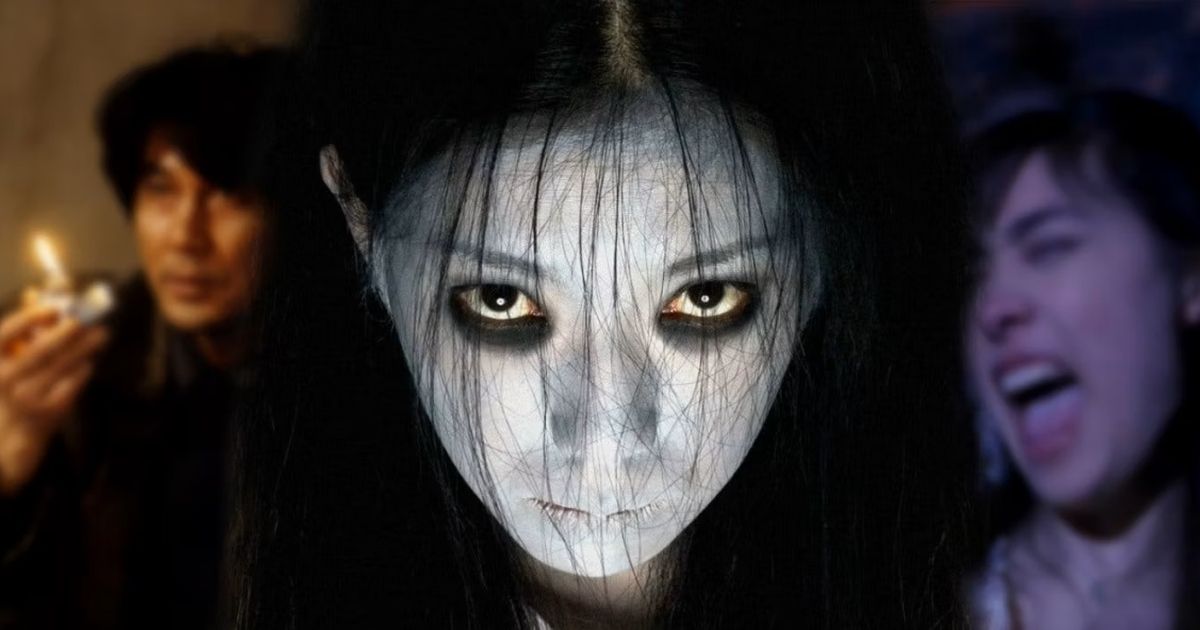
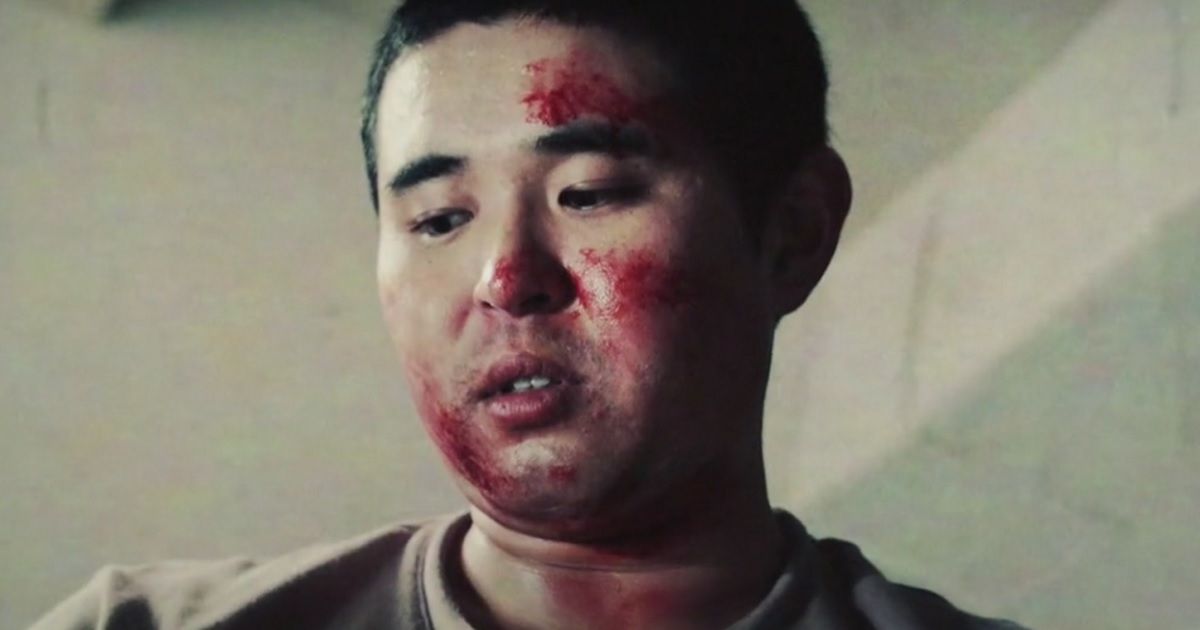
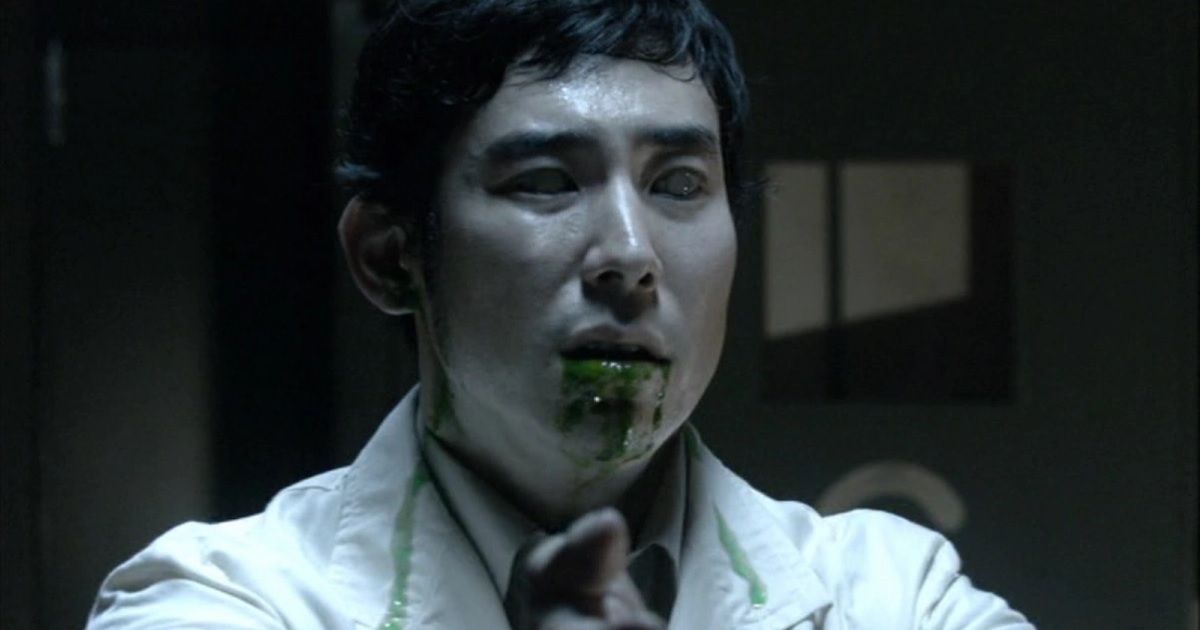
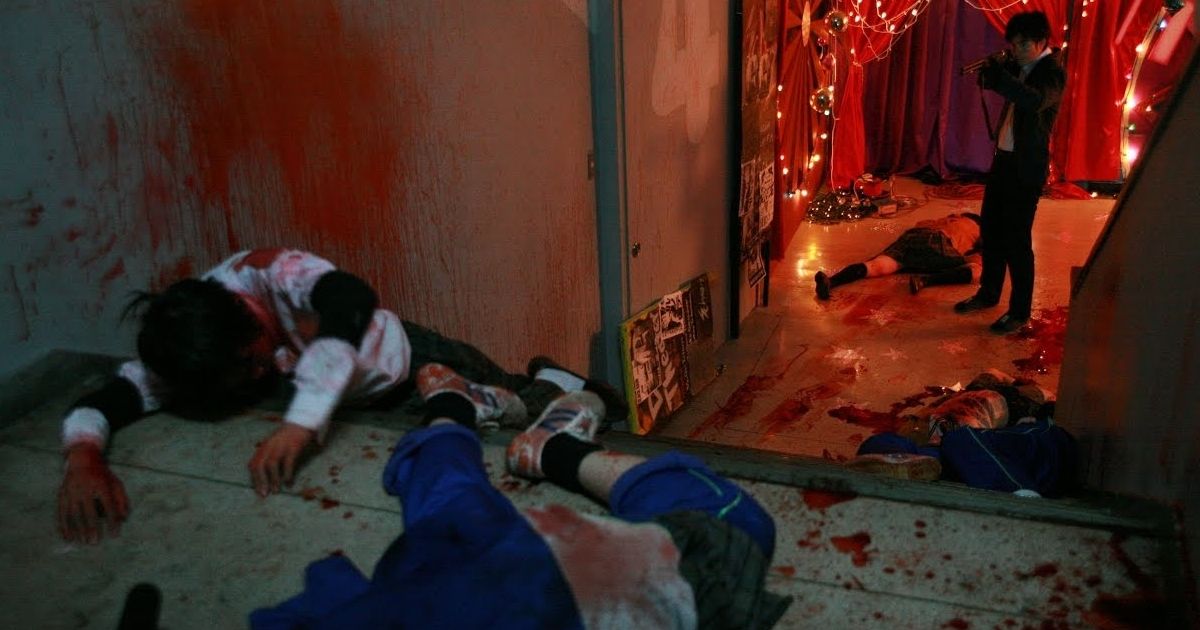
.jpg)
.jpg)
.jpg)
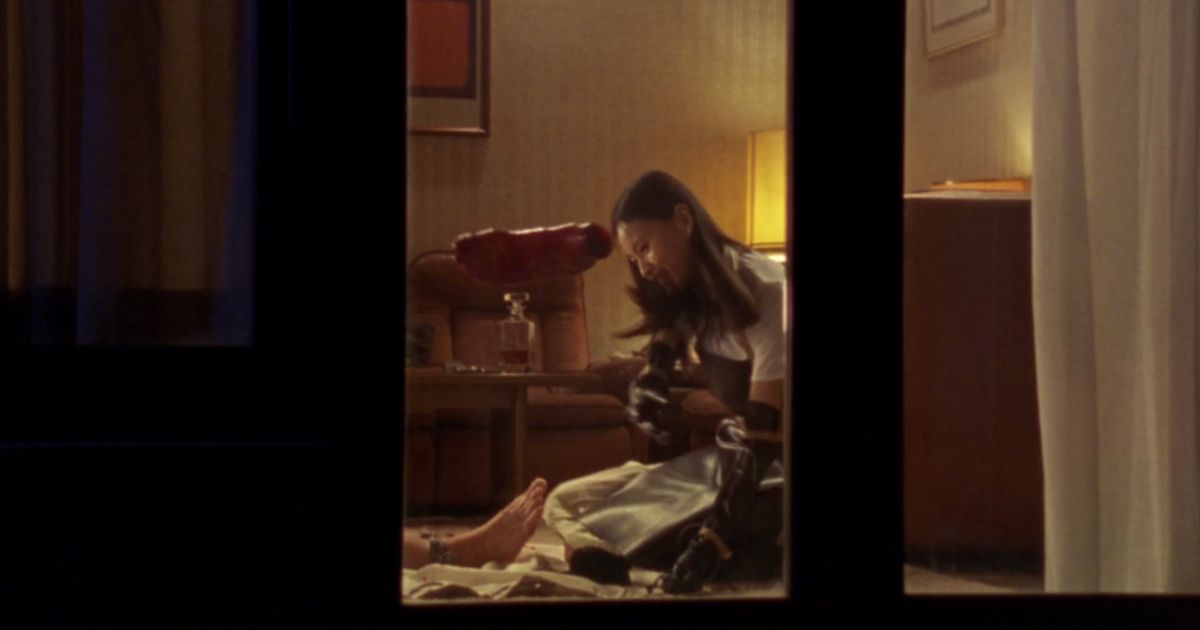
.jpg)
.jpg)
.jpg)
.jpg)
.jpg)
.jpg)
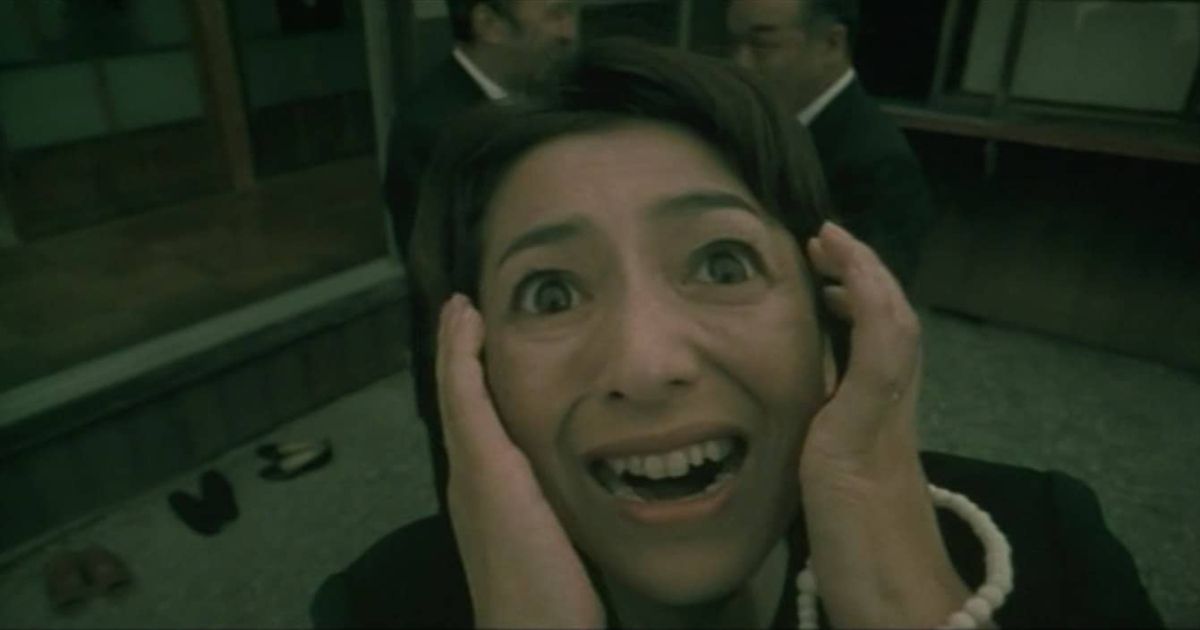
.jpg)